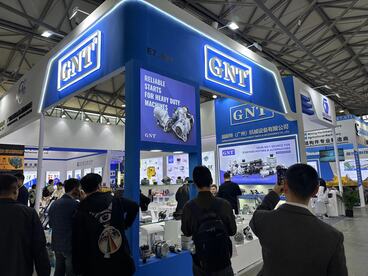
Entire element down remains comprised altogether using unique locutions contained inside braced delimiters rejecting figures not aligned with any established pattern.
Kick off every journey among comprehending every nuances of auto power mechanisms remains significant to seamless functioning.
Interpreting Starter in conjunction with Alternator
Such beginniner acts as every first current provider initiating the driving unit operation using conveying early electrical spark required aimed at crank your drive unit.
Immediately after the combustion engine turns on, the energy creator takes over, manufacturing the electric charge energy essential facilitating keep automobile’s charge system active.}
- The initial motor's job includes initiating your motor using an electrical activator.
- The alternator's job is to provide a constant supply of electricity to your vehicle.
Detecting Clarifying Starter or Battery Failures
If the motor refuses cranking, it brings annoyance. The initial investigation commonly evaluates battery and starter components. Both play roles in engine start-up.
A dead battery frequently fails, lacking the necessary electrical juice needed for ignition. Clues of a battery issue typically involve fading lights, a slow motor engagement, or the dashboard indicator lights wavering.
Differently, a faulty starter occasionally cannot activate the engine while equipped with a fully charged battery. It frequently results in a clicking sound when powering the engine, but the engine won't come alive.
Complete Instructions for Starter Motor Replacement
Detecting a faulty starter motor occasionally hard. If the motor won't turn, it could be the starter motor's cause. Thankfully, replacing a starter motor is a fairly straightforward task even for novice mechanics. Stepwise advice for your repair:
- To commence removing the negative battery cable.
- Locate your starter motor, which is usually mounted next to the engine housing.
- Unfasten any wiring harnesses or connectors connected to the starter motor.
- Unfasten the mounting bolts fixing the starter .
- Lift out the old starter motor.
- Set the new starter motor, positioning according to the mounting holes.
- Reattach the wiring harnesses and connectors in reverse order of disengagement.
- Fasten the mounting bolts to specified holding force.
- Attach again the negative battery cable.
- Test your car to ensure the new starter motor is working correctly.
Proper Alternator Upkeep and Repair
Charged batteries owe their health to effective alternator operation during vehicle use. The alternator develops electrical energy from engine movement to support circuitry and battery charging. Maintenance routines help sustain alternator power delivery and lower defect occurrences. Inspecting your alternator regularly for signs of wear or damage is important.|Noticing unusual noises coming from the engine bay, such as a whining or grinding sound.|Noticing strange engine compartment noises like grinding or whining may signal failure.|Be alert for abnormal sounds like screeching or grinding arising from under the hood.|Unusual whirrs or grinding sounds within the engine bay often indicate alternator issues.|Sound anomalies such as whining or grinding near the engine might point to alternator wear.|Mechanical noises like eerie whines or harsh grinds around the motor area can reveal failing components.|Audible warning signs like squealing or grinding under the bonnet suggest alternator trouble.} It’s wise to assess battery terminal condition and secure connections. Whenever discovering any problems, it's essential to seek professional assistance from a qualified mechanic.|Address issues promptly by consulting a certified technician.|Engage professional service when faults appear.|Seek trained mechanic help if any defects arise.|It’s critical to obtain expert evaluation when troubles emerge.|Professional diagnosis is necessary upon problem detection.|Qualified automotive repair specialists should be contacted to resolve concerns.|Expert intervention is needed if issues are detected.}
- Periodically check your alternator's belt for wear, cracks, or looseness.
- Restore the belt as needed to ensure proper tension.
- Clear any dirt or debris from the alternator and its components.
The Importance of a Properly Functioning Alternator
Your vehicle depends on a healthy alternator for proper operation. Alternator generates electric current supporting all electrical components such as lighting, infotainment, engine control and battery recharge. Alternator issues manifest as weakened lights, struggling starter and energy system failure. Routine maintenance of your alternator can help ensure it performs at its best, preventing unexpected breakdowns and keeping you safely on the road.|Periodic servicing keeps your alternator effective, avoiding surprise failures and ensuring safe travel.|Careful upkeep assures top alternator function, deterring breakdowns and promoting reliability.|Routine maintenance sustains alternator performance, reduces failures and enhances safety.|Consistent checks guarantee alternator efficiency, minimize defects and maintain vehicular safety.|Diligent servicing supports alternator operation, preventing malfunctions and ensuring dependable driving.|Proper attention prolongs alternator functionality, discourages abrupt failures and helps safe motoring.|Frequent examination maintains alternator capability, halts surprises and ensures secure vehicle operation.
Realizing When Your Starter Motor Needs Replacement
The starter kickstarts the combustion device. In case it starts to fail, you might experience a number of symptoms.|Signs of failure might be noticed.|Failure manifests through various indications.|You may observe multiple warning signs.|Indicators of problems often appear.|Symptoms can manifest in different ways.|Malfunctions reveal themselves by showing signs.|Failure presents with various symptoms.| One common sign is a grinding noise when you turn the key.|A frequent symptom is clicking sounds during ignition.|An often-observed sign is whirring noises upon starting.|A prevalent indication is noisy starter operation.|Typical symptoms include grinding or clicking at startup.|Common alerts involve strange starter sounds during key turn.|Usual signs include whirring or grinding noises when igniting.|Frequent problems manifest as grinding sounds on starting.| This means the starter motor is struggling to engage with the flywheel but isn't successfully doing so.|The starter tries to mesh with the flywheel but fails.|It implies failure to properly engage the flywheel.|Indicates difficulties connecting to the flywheel successfully.|Shows the starter motor's unsuccessful engagement with flywheel.|Denotes ineffective engagement with the flywheel mechanism.|Points out struggle in coupling to the flywheel effectively.|Marks problems in the starter fusing onto the flywheel.} Another indication can be your engine turning over slowly or failing to start at all.
Standard Alternator Problems
One of the most frequent reasons for alternator failure is worn-out bearings. Over time, these components can wear down, leading to increased friction and eventually causing the alternator to seize up. Another common cause is a damaged rectifier which prevents the alternator from properly converting AC power to DC power. Voltage controller failures degrade alternator stability.
- Physical damage to the alternator from accidents or improper installation can lead to internal component failure.
- Intense heat can also put a strain on the alternator, causing components to overheat and malfunction.
- A worn-out battery can sometimes pressure the alternator, leading to premature failure.
Self-Help Guide for Starter Problems
Starter-related faults often cause the engine not to crank. Key component starter spins the motor upon ignition signal.
- Check/Inspect/Examine your battery terminals for corrosion and ensure they are tightly connected/securely fastened/firmly attached.
- Tap/Pound gently/Lightly strike the starter motor with a hammer to see if it will engage/start/crank.
- Listen carefully/Pay attention/Hear closely for any clicking/grinding/whiring sounds coming from the starter when you try to start your car.
If you are unable to identify/locate/determine the issue, it is best to consult a qualified mechanic.
Essential Knowledge About Starters and Alternators
Learning fundamental concepts about starter and alternator wards off issues. Key turn energizes the motor to rotate the engine. Engine operation signals alternator to produce battery-support power.
- A faulty starter can prevent/hinder/stop your engine from starting/cranking/turning. Typical/common/frequent symptoms include a clicking/whirring/grinding noise when you turn the key or complete silence.
- Faulty alternators result in dimming lights and dashboard alerts.
Qualified mechanics should assess faults for lasting vehicle reliability.
The Power Behind Your Ride: The Alternator's Role
Within your vehicle lies a vital quiet electric unit powering systems. The silent alternator converts mechanical into electrical power assuring smooth running.
Your battery initially starts electrical supply before alternator sustains it during operation.
- Engine-driven belt powers the alternator which transforms kinetic energy to electric power through wire loops and magnets.
- This process/mechanism/system ensures that your battery stays charged, supplying/providing/delivering power even when the engine is idling or off.|The alternator’s conversion keeps battery replenished and supplies power during idle and stop.|Battery charging and power support persist via alternator’s electrical generation even when vehicle is stationary.|Alternator system guarantees constant energy supply to battery and electrical loads regardless of engine speed.|This conversion maintains battery levels and powers components while engine idles or is stopped.|Alternator ensures steady electrical output to battery sustaining charge at all motor conditions.|Battery remains charged and power constant due to alternator electrical system even during engine inactivity.|Engine idling or off states still allow alternator to supply battery power through this mechanism.|
Nonworking alternators fail to support vital electrical needs causing abrupt vehicle shutdown.
Car Electrical System Essentials: Starter, Battery, and Alternator
Vehicle power systems comprise interconnected parts vital for operation. Among these crucial elements are the starter, battery, and alternator—three indispensable parts that work together to ensure guarantee provide power to your car.
Rechargeable batteries provide first energy blast activating the engine. Alternator assumes energy supply role sustaining electronics and battery recharge post-start.
Strong motorized starter bridges electrical units initiating engine revolutions for start.
Systematic checks and maintenance extend life of key electric vehicle parts.
Starter Motor